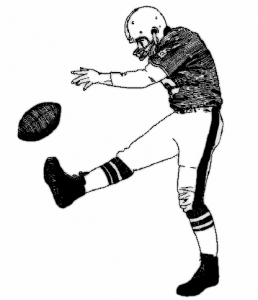Every now and then I construct a case study about a situation that applies more broadly to our work in the non-profit sector and has many potential paths to the outcome. While this particular case is personal, it has application to the advancement field; for example, the dilemma of legacy naming opportunities that may have more than one interested donor and promises have been made.
I was approached by an organization that our firm supports with a conference sponsorship, and was asked by the board chair (we will call him Paul) to become the Lead Sponsor for the coming year. After all, he said, “it was always understood that Copley Raff would have the right of first refusal if the lead sponsorship opportunity presented itself.” The ask represented an upgrade of our past support. I replied that I would consider it. Over lunch, another board member followed up to close the deal and explore potential benefits that might result from the sponsorship.
Shortly thereafter I committed to the Lead Sponsor spot, and drafted a proposal that outlined some modest additional considerations to accompany the sponsorship. In response, Paul requested a conference call with himself and the other board member to discuss our proposal.
During the call, Paul admitted that he had blundered and had not read the proposal properly. He somehow assumed that I was renewing at the second tier sponsorship level – not upgrading to the Lead Sponsorship. During the intervening period, he had given permission to another board member to seek a Lead Sponsor. Long story short, a competitor simultaneously agreed to become the Lead Sponsor.
After expressing an appropriate level of remorse and regret, Paul decided to renege on our agreement and let things stand with the competitor acquiring the rights as Lead Sponsor.
While this story is related to the “business” of advancement and consulting, a similar scenario could also could unfold when a prized legacy naming opportunity is inadvertently offered to two different donors by two different representatives of your organization.
Though I do not blame Paul for his mistake…we all make mistakes… the test of one’s mettle, and that of organizational leadership, is how mistakes are redressed. The least courageous path may serve short- term purposes but may result in long-term detriment to your organization.
We should always treat donors as we would want to be treated. Assume they are worldly adults and understand the complexities of doing business, running a fundraising campaign and the fact that signals can get crossed. Assume they will understand rational explanations and expression of genuine regret…then do the right thing and move on.
As with any investment or contribution to a non-profit organization, where long-term relationships are critical, an important consideration is the integrity of the organization’s leadership. It is a situation like this case study that shines a light on an important dimension of leadership, which is the ability to swallow hard, be creative and make things right.
What would you have done if you were in Paul’s position?
For more information about Copley Raff and its spectrum of consulting services, please see www.copleyraff.com. Follow CRI on Twitter @copleyraff. For those in healthcare visit www.acophilanthropy.com.
The next PLAN-MGO sessions are October 27-29, 2015 in Washington DC and April 8-11, 2016 in Boston.
(To receive Copley Raff’s exclusive tool to help you determine how much to ask for a multi-year pledge from your major donors, write to cri@copleyraff.com with your request. This tool has been validated by more than 200 advancement officers and is the only tool of its kind available.)


